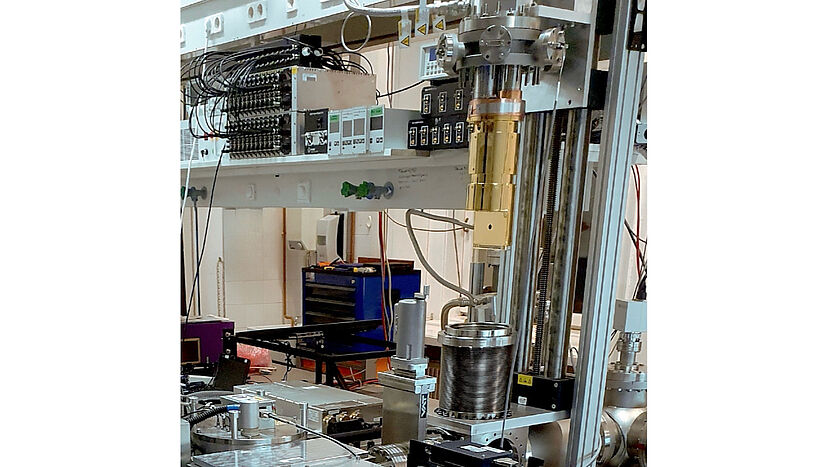An international research team led by Markus Arndt from the University of Vienna has made a breakthrough in protein ion detection. The team used superconducting nanowire detectors, which have a detection efficiency 1,000 times higher than conventional ion detectors. These detectors can also distinguish macromolecules by their impact energy, allowing for more sensitive protein detection. The research involved a European consortium including Single Quantum, EPFL, MSVision, and the University of Basel. The findings, published in Science Advances, could have applications in mass spectrometry, molecular spectroscopy, molecular deflectometry, and quantum interferometry of molecules.
The Importance of Macromolecule Detection
The detection, identification, and analysis of macromolecules are crucial in many areas of life sciences, including protein research, diagnostics, and analytics. Mass spectrometry is often used as a detection system – a method that separates charged particles (ions) according to their mass-to-charge-ratio and measures the intensity of the signals generated by a detector. This provides information about the relative abundance of the different types of ions and therefore the composition of the sample. However, conventional detectors have only been able to achieve high detection efficiency and spatial resolution for particles with high impact energy. This limitation has been overcome by the use of superconducting nanowire detectors.
Superconducting Nanowire Detectors in Mass Spectrometry
In the study, a European consortium, coordinated by the University of Vienna, demonstrated the use of superconducting nanowires as excellent detectors for protein beams in quadrupole mass spectrometry. Ions from the sample to be analysed are fed into a quadrupole mass spectrometer where they are filtered. By using superconducting nanowires instead of conventional detectors, particles that hit the detector with low kinetic energy can be identified. This is made possible by a special material property (superconductivity) of the nanowire detectors.
The Role of Superconductivity in Detection
The key to this detection method is that nanowires enter a superconducting state at very low temperatures, in which they lose their electrical resistance and allow lossless current flow. Excitation of the superconducting nanowires by incoming ions causes a return to the normal conducting state (quantum transition). The change in the electrical properties of the nanowires during this transition is interpreted as a detection signal. Nanowire detectors have a remarkable quantum yield at exceptionally low impact energies and redefine the possibilities of conventional detectors.
Potential Applications and Collaborative Efforts
Nanowire detectors can find new applications in mass spectrometry, molecular spectroscopy, molecular deflectometry, or quantum interferometry of molecules, where high efficiency and good resolution are required, especially at low impact energy. The research was a collaborative effort involving the University of Vienna, Single Quantum, EPFL-Lausanne, MSVision, and the University of Basel. The work was funded by the European Commission as part of the SuperMaMa project, which is dedicated to research into superconducting detectors for mass spectrometry and molecular analysis. Funding from the Gordon & Betty Moore Foundation also contributed to the analysis of the modified proteins.
“If we now use superconducting nanowires instead of conventional detectors, we can even identify particles that hit the detector with low kinetic energy,”
Project leader Markus Arndt from the Quantum Nanophysics Group at the Faculty of Physics at the University of Vienna.
“With the nanowire detectors we use,” says first author Marcel Strauß, “we exploit the quantum transition from the superconducting to the normal conducting state and can thus outperform conventional ion detectors by up to three orders of magnitude.”
In addition, a mass spectrometer adapted with such a quantum sensor can not only distinguish molecules according to their mass to charge state, but also classify them according to their kinetic energy. This improves the detection and offers the possibility for have better spatial resolution,” says Marcel Strauß.
Quick Summary
An international research team has made a breakthrough in protein ion detection using superconducting nanowire detectors, which have a detection efficiency 1,000 times higher than conventional ion detectors and can distinguish macromolecules by their impact energy. This advancement, which allows for more sensitive detection of proteins and provides additional information in mass spectrometry, could find new applications in areas requiring high efficiency and good resolution, especially at low impact energy.
- An international research team led by quantum physicist Markus Arndt from the University of Vienna has made a significant breakthrough in the detection of protein ions using superconducting nanowire detectors.
- These detectors have a detection efficiency 1,000 times higher than conventional ion detectors due to their high energy sensitivity, achieving almost 100% quantum efficiency.
- Unlike conventional detectors, these nanowire detectors can distinguish macromolecules by their impact energy, allowing for more sensitive detection of proteins and providing additional information in mass spectrometry.
- The research was a collaborative effort involving the University of Vienna, Single Quantum in Delft, EPFL in Lausanne, MSVision in Almere, and the University of Basel.
- The nanowire detectors work by entering a superconducting state at very low temperatures, allowing lossless current flow. Incoming ions excite the nanowires, causing a return to the normal conducting state, which is interpreted as a detection signal.
- This technology could find new applications in mass spectrometry, molecular spectroscopy, molecular deflectometry, or quantum interferometry of molecules, especially where high efficiency and good resolution are required at low-impact energy.
- The research was funded by the European Commission as part of the SuperMaMa project and the Gordon & Betty Moore Foundation.

